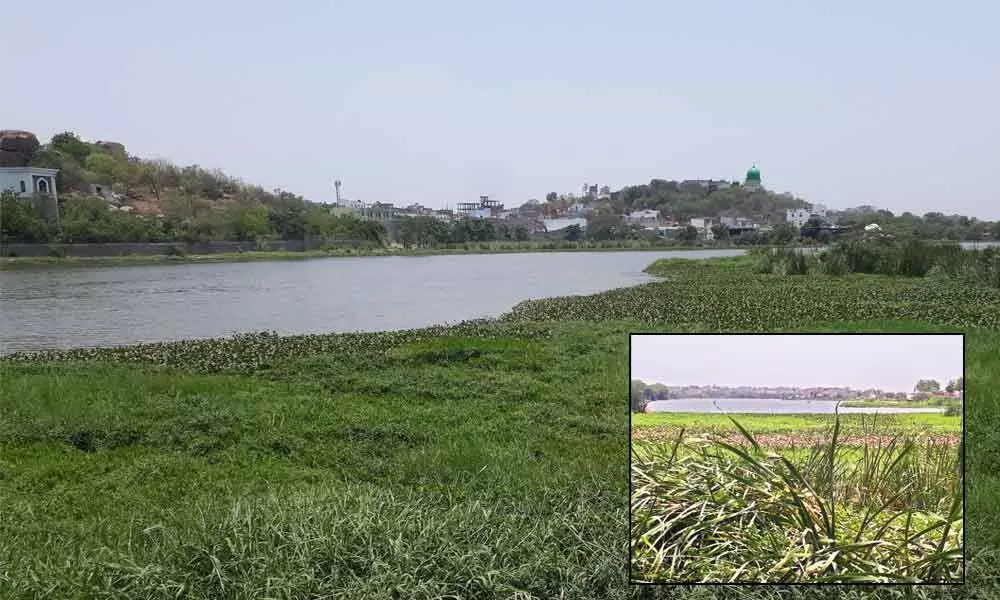GHMC Apathy Stings Public : Hyacinth all over Mir Alam Tank

Due to its invasive potential on surrounding eco-systems, hyacinth is often termed world’s worst aquatic weed. Its infestation hurts aquatic biodiversity,causes siltation, actsas breeding ground for mosquitoes. Despite its importance, sadly, the tank is not yet on the list of water bodies taken up for clearing of the weed
Its infestation poses grave health risk to nearby settlements
Noxious Weed
• Damage to environment and economy is enormous
• A single plant can cause rapidly significant infestation.
• An enormous water loss through evapotranspiration
• Hampering fishing and reducing catch source of food
• A serious threat to farming as it blocks canals, drainage
• They deplete biodiversity and affect some fish species
• Degrades water quality, by reducing levels of oxygen
• Becomes breeding place for mosquitoes etc
• Attributed to diseases like malaria, encephalitis, filariasis
Hyderabad: Despite annual spurt in seasonal fevers due to mosquito menace in monsoon, the city civic body fails to keep water bodies cleared of hyacinth. Mir Alam Tank, a 215-year-old historic water body is enveloped by a thick layer of the weed.
Due to its invasive potential on surrounding eco-systems, hyacinth is often termed world's worst aquatic weed. Its infestation hurts aquatic biodiversity, causes siltation, acts as breeding ground for mosquitoes as well as other disease vectors such as the bilharzia snail.
Cases of malaria and other vector-borne diseases are on the rise in the settlements close to the water body, especially in Hassan Nagar, Sulaiman Nagar, Kishanbagh, Attapur and other adjoining areas after the recent copious rains. The historic tank covers Bahadurpura, Kishan Bagh, Attapur, Hyderguda and Rajendranagar on its embankments.
"The outburst of seasonal diseases is common in Hassan Nagar, Sulaiman Nagar and all its adjoining areas soon after monsoon showers as the water body gets filled with hyacinth brings back the mayhem caused by mosquitoes.
Though the GHMC officials are fully acquainted with the situation here, they do nothing to stop mosquito breeding," rues Mohammed Zaheeruddin, a social activist from Hasan Nagar. It is said that the GHMC has brought two machines from China to clear hyacinth from 10 water bodies. Mir Alam Tank sadly failed to make it to the list.
"Presently, we have taken up a project to clean up 10 reservoirs in the city and the cost of project is Rs 7 crore with a term of 3-year maintenance. We have already obtained two machines from China to remove hyacinth from the water bodies while procurement of other two machines was held up due to corona virus restrictions.
We are expecting the same in next week that would help increase the pace of the work. As far as Mir Alam Tank is concerned, this water body is not on the list as a tender in this regard is still in initial stages," informed Ravinder Reddy of Sri Ganesh Constructions, which bagged the contract from the GHMC.

















